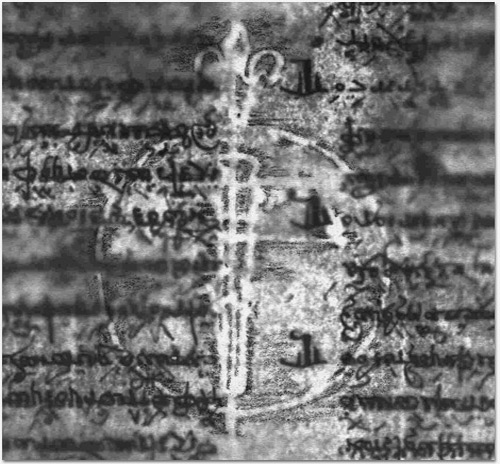Though the terminology is misleading a “watermark” is not at all what it sounds like, and should never be confused with a mark actually made by water on the surface of a piece of paper! Spots like these were considered ghastly errors in the glory days of artisan-made paper and were thus referred to by the altogether more dramatic term “papermaker’s tears.” Confusing the two, say in a shadowy tavern, over a flagon of mead, could very well result in the dreaded “papermaker’s fists” impressing themselves into the pulp of your face.
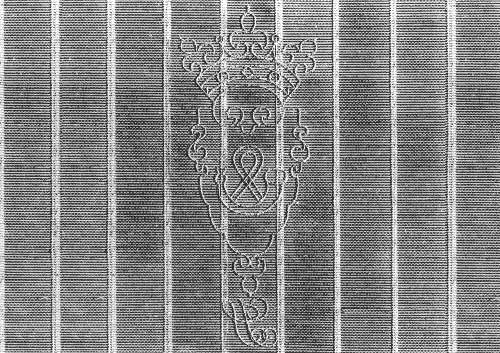
The oldest form of watermarks are today referred to as “wire watermarks.” These were made by bending pieces of wire into filigree designs, tying them onto the mesh of the paper molds, and impressing them into the paper pulp while it was still damp. The comparative thinness of the areas which were pressed under this wire formed an image which only revealed itself when the paper was held up to light. Scholars seem to agree that watermarks of this kind are very nearly as old as papermaking itself.
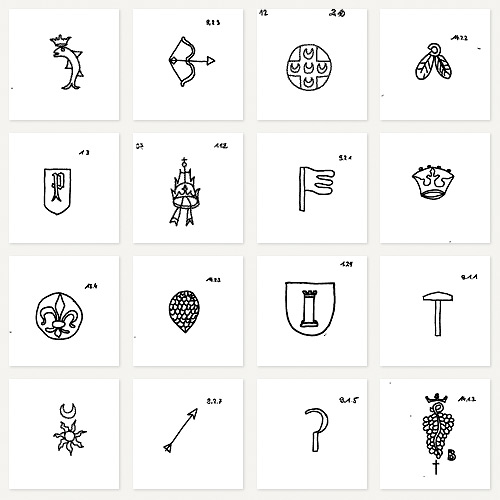
The first known watermarks appeared toward the end of the 13th century, originating with the Albigensian papermakers of Southern France and Northern Italy. (Though papermaking as an industry is said to have first taken root in Spain ⊕ the first great center of the papermaking industry in Europe was actually in Italy, specifically in Fabiano in the marquisate of Ancona, where mills were set up in 1276.) Their use spread very quickly all throughout Europe.
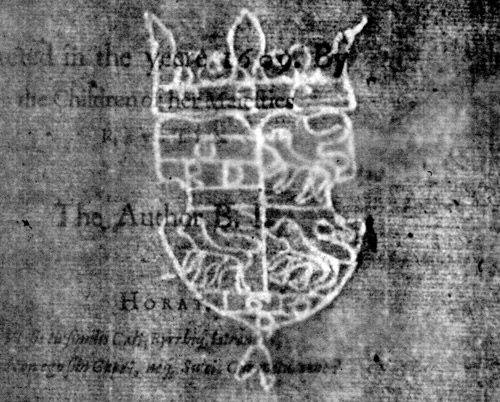
The purpose of watermarks at the moment of their invention is unclear. My guess is that they were invented accidentally and initially used in the service of kings or nobles seeking to secure the provenance of their communications (or, thinking more imaginatively, possibly to embed secret messages). Alternately they might have initially served a more noble cause still- amusement.
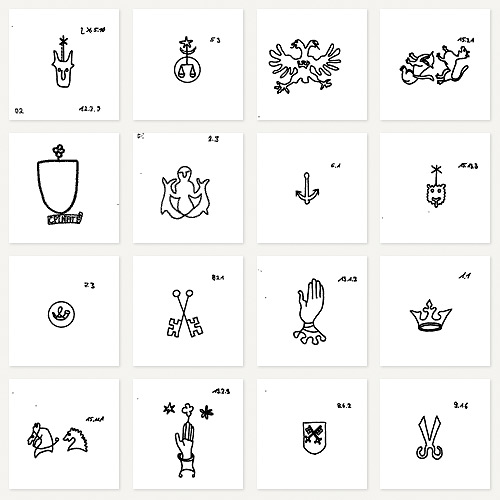
More qualified postulators think that perhaps they were a means of distinguishing between papers made by different workmen within “factories” who were paid by the sheet. Other theories, of course, abound-
Quote: “The first watermarks… were artless in design, the emblems were so mystic in character that it is reasonable to believe that they were meant to convey a meaning or signal among the workers who fashioned them. It has been suggested that these old devices may have been used solely as marks of identification for sizes of moulds and the paper formed thereon, or, as they are used today, simply as trademarks of the papermakers. Other writers have advanced the theory that they may have been employed in a purely symbolic sense… employed by the heretical papermakers as symbols of religious propaganda… embodying a hidden meaning understood only by the people of medieval times.
It might be suggested that the old watermarks were little more than a capricious notion of the papermakers who may have created the designs to satisfy their own artistic feeling. Another supposition… was that since the workmen could not read or write it was essential to appeal to them by means of pictures. Simply to have marked a mould with letters or numerals would have conveyed but slight meaning to the illiterate artisans of the fourteenth or fifteenth centuries; it was necessary to convey the meaning to them through the use of illustrations. For the same reason the signboards of inns and shops were of a pictorial nature inasmuch as the untutored populace could not have deciphered the lettered name had it been painted upon the swinging signs. -From THEOSOPHY, Vol. 53, No. 9, July, 1965.
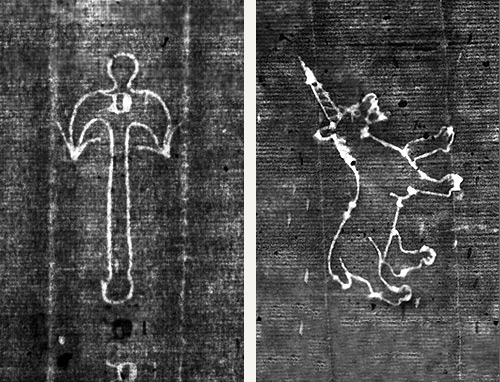
Regardless of their origins watermarks were eventually adapted to be both trademarks (of a sort) for different paper-makers and a means of demarcating different types of paper, and batches, within their inventories. Today the oldest of watermarks are mainly used by conservators for dating documents and artworks. ⊕

The forms that these marks took were myriad and largely in-line with the common symbologies of the day, which is to say they were images commonly used in other spheres with meanings that were probably well understood by people of the time. Among them were all the expected animals (both terrestrial and fantastic), celestial objects, all manner of fruit and vegetable, tools, insects, flowers, crests, weapons, and symbolic bits–or indeed full on representations–of the human anatomy. By 1600 they had multiplied to the extent that individually identifiable watermarks numbered in the tens of thousands.

Though watermarking technology advanced quickly to allow for shades and complexity and greater detail I am personally most fond of these simple and somewhat naive forms which read like ancient pictograms or distracted doodles. They are infinitely more mysterious and, to my mind, more fittingly evocative of a craft practiced by skilled artisans utilizing callused hands.
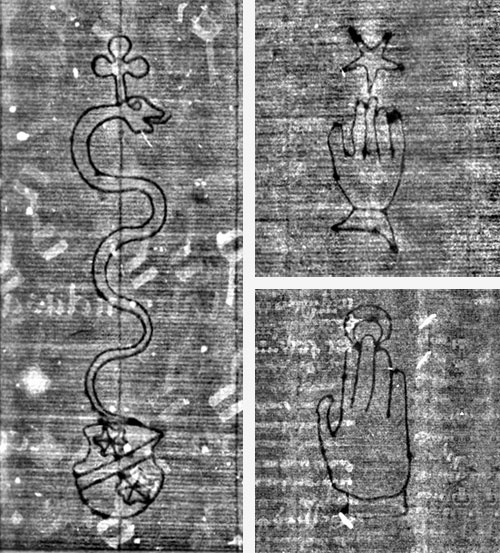
For many many more examples and more information on the history of watermarking see the following-
Databases:
The Piccard watermark collection
Wasserzeichen des Mittelalters
Watermarks in Incunabula printed in the Low Countries
Watermarks in Incunabula printed in España
Mairie De Toulouse
Other:
Watermarks.info’s collection
British assoc. of paper historians
Motherbedford.com
Georgia Tech
Bates.edu
Theosophy, Vol. 53, No. 9
Whistler’s watermarks
Dürer’s watermarks
Dante’s watermarks
Make your own watermark.
Hope ye seekers, emphmeraphiles, and iconography thieves find something of interest in all that.
